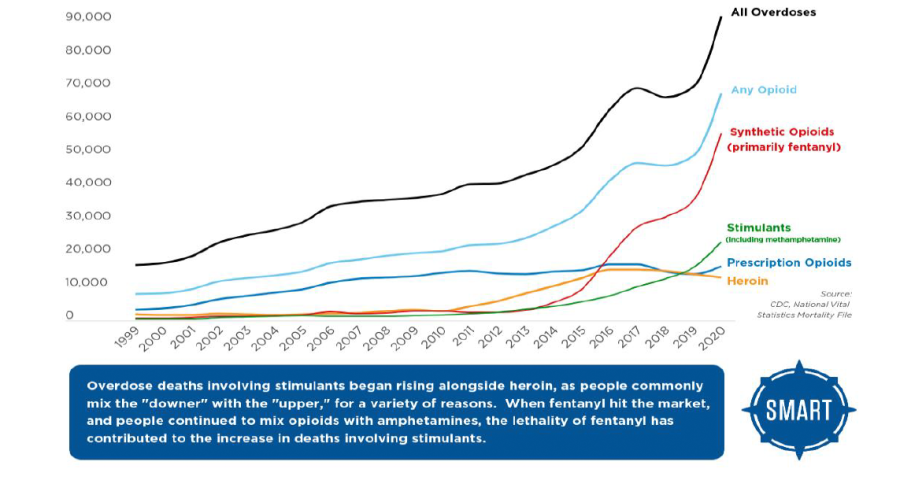Read the full policy brief here.
Key Points
- Opioid overdose deaths (ODD) are best understood as three phases: first due to prescription opioid misuse, followed by a rise in heroin use, and currently due to contamination by synthetic opioids such as fentanyl. Each phase has posed unique policy challenges.
- Numerous policies and practices have successfully reduced prescription opioid and heroin ODD, but ODD due to fentanyl and other synthetic opioids continue to rise, especially since the COVID-19 pandemic began.
- Fentanyl test strips, syringe service programs, greater naloxone (Narcan, Kloxxado) availability and other harm reduction approaches have been implemented in recent years with positive results, but synthetic opioids continue to cause deaths due to their extreme potency and widespread availability.
- Expanding access to treatment is crucial to reducing ODD. Such policies include initiating medication for opioid use disorder (MOUD) within jails and emergency departments, reducing the behavioral health workforce pay gap, and expanding health insurance access.
- Additional harm reduction and prevention policies may have an even greater impact on reducing ODD.

